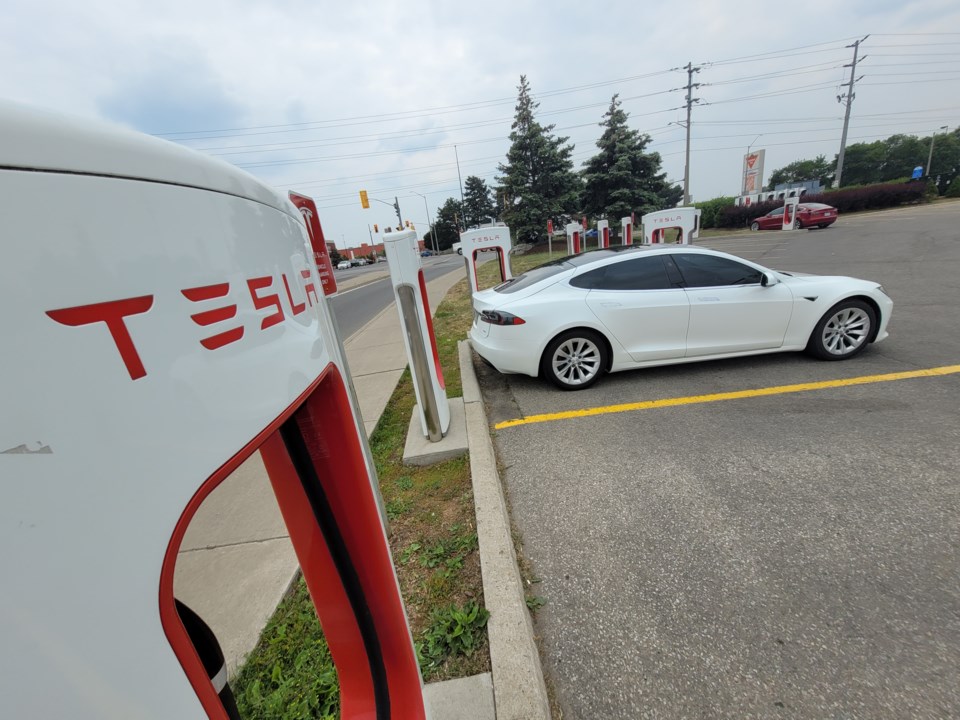BarrieToday welcomes letters to the editor at [email protected] or via the website. Please include your full name, daytime phone number and address (for verification of authorship, not publication). The following letter is from an electric vehicle owner in response to 'COLUMN: Big question around electric vehicles will always be cost,' published April 30.
Today, I read Bob Bruton's column about electric vehicles. I wanted to address some of those concerns about cost.
A Honda Civic is used in the example of a typical and affordable car in our area. I looked up Honda's website and before any dealer mark-ups, the base model Civic does indeed start under $29,000 (Cdn.) for a new car, while a base Model 3 starts at $51,000.
A more accurate comparison, perhaps, would be the Chevy Bolt, which starts at $41,000. It's important to note that Tesla does not charge any "dealer mark-ups" and are generally available right away, while some gas cars are subject to dealer mark-ups and a longer wait to get it.
Let's say someone bought a Chevy Bolt and paid $41,000 for it. Now the average ownership of new cars by Canadians is about nine years, according to an article on Driving.ca.
If both owners kept their cars for eight years and drove the average of 20,000 kilometres a year then the gas savings alone would be about $2,000 per year, likely more — equalling $16,000 in savings.
There are far less moving parts in the electrics and almost no maintenance as compared to the Honda, for example, albeit it's a reliable brand. There is also a $5,000 iZev federal rebate off the purchase price of the Chevy Bolt immediately. The Chevy Bolt also has an eight-year/160,000-kilometre warranty for the battery and drive components.
Regarding putting a wall charger in the garage (Level 2, which is 32 to 40 amps and 240 volts), that is ideal, but a Level 1 wall-charger plug at 120 volts is also an option worth considering when combined with the occasional fast-charging publicly when on road trips if the car is mostly used in the city here.
Here's a video about someone in the GTA using only Level 1 charging through the winter and through his daily commute work week, Monday to Friday.
In the near-term future, I believe there will also be more Level 2 destination chargers throughout the city and shopping plazas, streets and workplaces as this transition happens.
Condo owners and their boards will find that it is possible to have a Level 2 sub-metered electric install at their parking space and perhaps other more common solutions would be implemented as well.
Hope this helps explain a few things about the cost of ownership and using an electric car.
Jeff Hiemstra
Barrie



